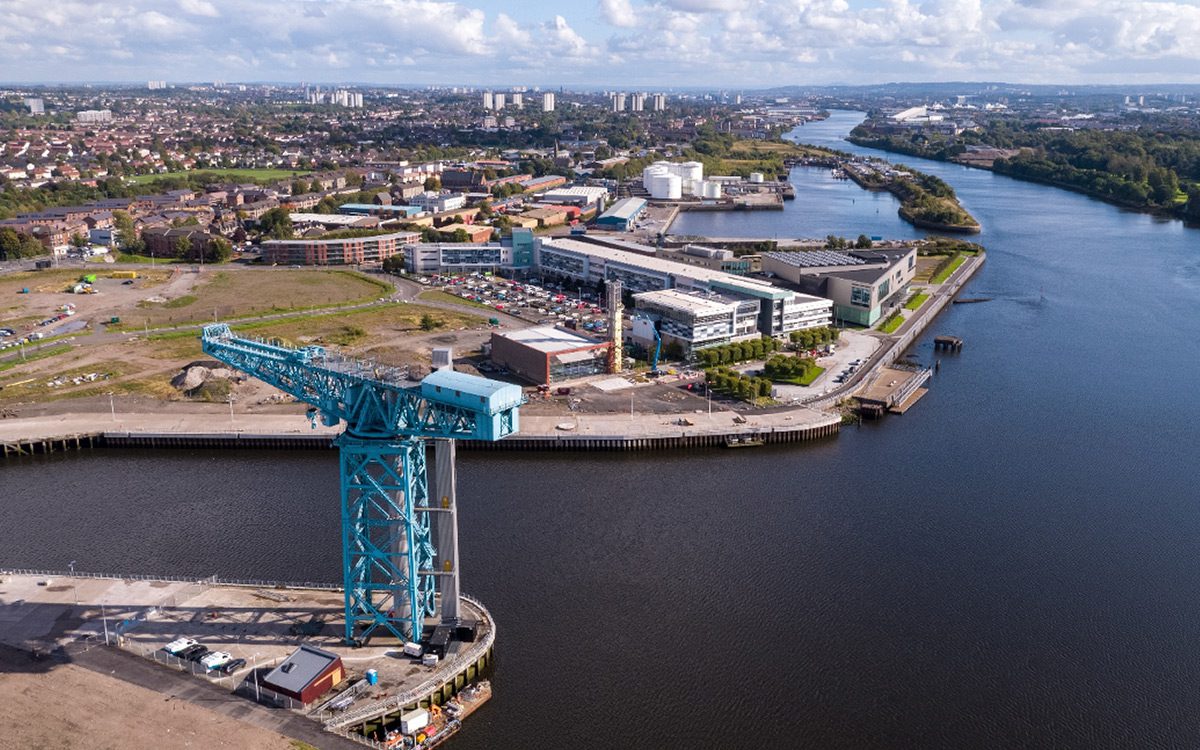A Clydebank district heating scheme has been awarded a prestigious European Heat Pump City of The Year Award, an award that recognises the smartest, most efficient, and most sustainable heat pump projects across the continent.
The Queens Quay scheme was recognised with this award as a result of its sheer scale and ambition, as it is the UK’s first industrial water source heat pump and the largest water-source heat pump project in the UK.
Constructed as part of a £250m regeneration project in the area, the heat exchange project was designed to provide hot water and low-carbon energy to 1200 new residential and business buildings in the area.
It works by using two 2.65 megawatt heat pumps to harness the ambient heat of the River Clyde and increase it to up to 80 degrees Celcius, delivering it via a 2.5km network of piping.
In Europe, the system is relatively common but has not been deployed at scale in the UK, with many district heat systems using waste heat from combined heat and power plants or geothermal sources instead.
The success of this scheme highlights the massive part heat networks will play in decarbonising the heating and energy industry.
How Does A Water Source Heat Pump Work?
There is a lot of natural, ambient heat around, even if it can sometimes be imperceptible. There is heat in the ground and underwater.
Using a series of submerged flexible pipes containing a working fluid mixture, a heat pump pushes working fluid through the piping, which in turn absorbs the heat of the surrounding water.
Then, using an electric compressor, the fluid mixture is compressed which increases the temperature efficiently. Once the fluid is at the right temperature, a heat exchanger siphons the heat for use in heating up water before the fluid is pumped back through the pipework again.
As underwater heat sources are often more efficient and more consistent than ground sources, the heat transfer rate is higher, meaning less energy is required to get the temperature a resident wants.
As well as this, so long as the water source used is constantly moving, such as a river, that heat is constantly being replaced, making the system more sustainable and constant regardless of weather or environmental conditions.
They can be easier to install as well than ground source heat pumps, as there is no need for boreholes and trenches to be dug nearby. Instead, the necessary network of piping is simply laid in the body of water and has little impact on the aesthetic appearance of the river or body of water.
The one limitation of the system regards the availability of a suitable body of water. If you live in a city near a large river or flowing canal, this is unlikely to be an issue, but lacks, ponds and standing water sources can be more problematic.
The reason for this is that when the heat pump transfers heat from the water to the working fluid mixture, it lowers the temperature of the water, which is fine in deep and flowing water but can cause a water source to freeze if it is not deep enough.

